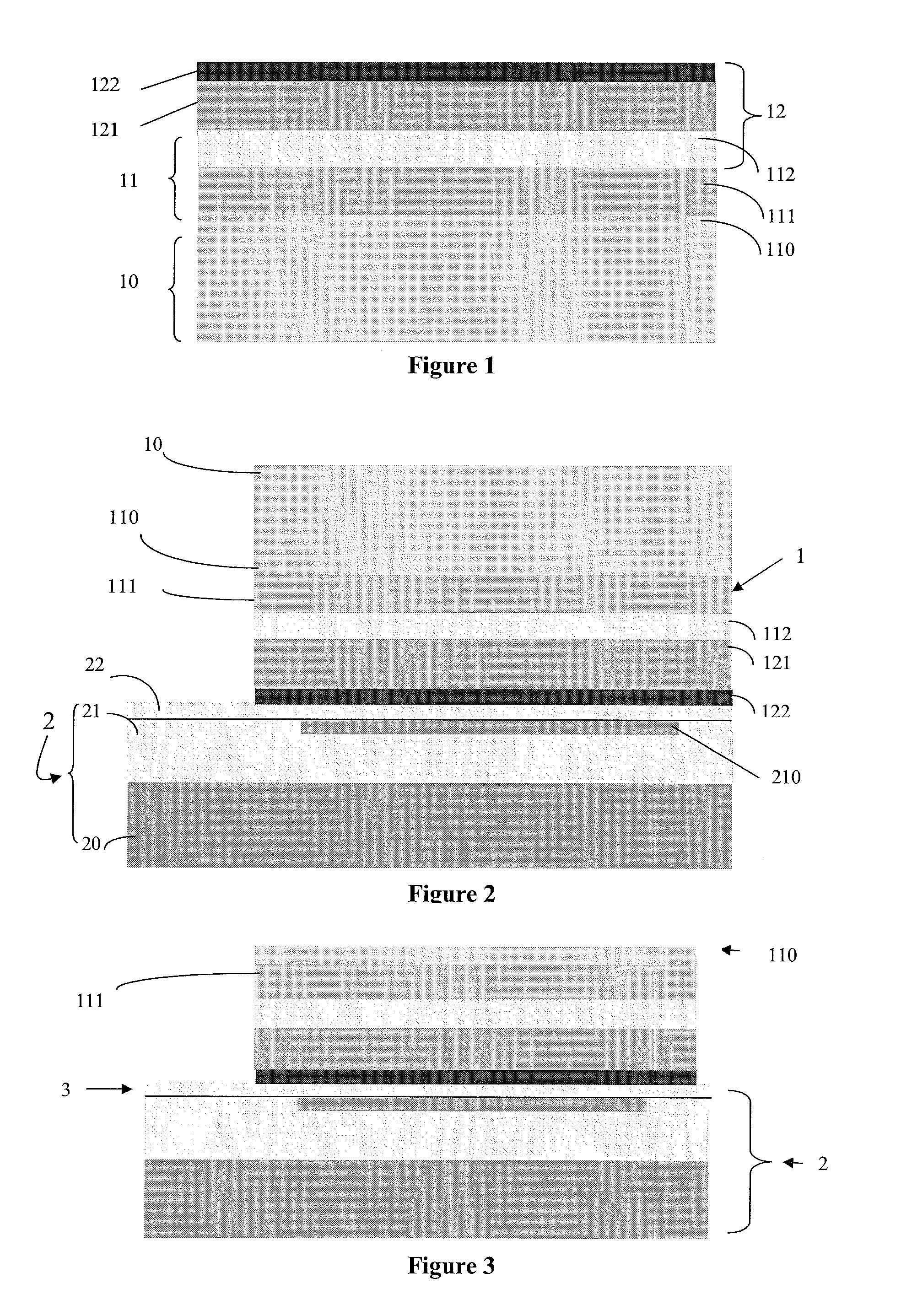Method of producing a photonic device and corresponding photonic device
a photonic device and photonic technology, applied in the field of silicon photonics, can solve the problems of inability to optimize the performance of lasers and photodetectors independently, in terms of layer thickness and composition, and inability to use techniques for some important and common applications, and achieve the effect of simplifying the process
- Summary
- Abstract
- Description
- Claims
- Application Information
AI Technical Summary
Benefits of technology
Problems solved by technology
Method used
Image
Examples
Embodiment Construction
[0039]FIG. 1 illustrates the first step of the method according to the invention by showing an epitaxial structure 1 obtained by any suitable process, typically by means of metal organic chemical vapour deposition MOCVD or molecular beam epitaxy MBE techniques.
[0040]The process is carried out on a III-V substrate 10 to obtain first the photodetection p-i-n structure 11 and then the light source or laser n-i-p structure 12. Both structures are stacked.
[0041]In an example, the growth is performed on a InP substrate.
[0042]The photodetection structure 11 includes a upper contact layer 110, an absorbing layer 111 and a bottom contact layer 112. As shown in FIG. 1, the photodetector upper contact layer 110 is in the continuation of the substrate 10 and the absorbing layer 111 is located between the upper contact layer 110 and the bottom contact layer 112.
[0043]The light source or laser structure 12 includes a upper contact layer 112, a laser layer 121 and a bottom contact layer 122.
[0044]...
PUM
 Login to View More
Login to View More Abstract
Description
Claims
Application Information
 Login to View More
Login to View More - R&D
- Intellectual Property
- Life Sciences
- Materials
- Tech Scout
- Unparalleled Data Quality
- Higher Quality Content
- 60% Fewer Hallucinations
Browse by: Latest US Patents, China's latest patents, Technical Efficacy Thesaurus, Application Domain, Technology Topic, Popular Technical Reports.
© 2025 PatSnap. All rights reserved.Legal|Privacy policy|Modern Slavery Act Transparency Statement|Sitemap|About US| Contact US: help@patsnap.com



